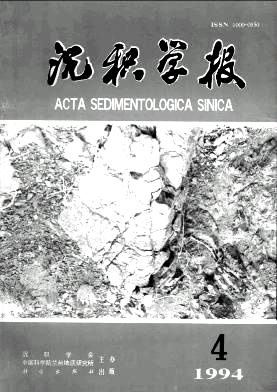Pyrolysis Chromatography Analyses on Coal Macerals and Whole Coals
- Received Date: 1994-01-15
- Publish Date: 1994-12-10
Abstract: The question on oil generation in the coal and coal-bearing deposit has attracted ever more geologists attention already, with the strengthening of oil exploration. Jurassic strata are widespread in the Junggar Basin,being characterized by a large sedimentary area and a high percentage of coal. Until now,Known oil and gas fields formed from coal measures include the Qigu field and some high-yielding.wells. In the southern margin of the basin,the total thickness of the lower and middle Jurassic series is about 2500m,of which the largest thickness of coal seams is 160~238m,and that of individual coal layer reaches 40~70. 47m Most. of coal layer numbers are more than 50. To this end, the authors collected Jurassic coal samples there,microscopic analysis indicates that they contain Higher hydrogen-rich macerals and vitrinite. By using the flash pyrolysis method, the hydrocarbon potential of coal macerals and whole coals is studied. These results show:(1)the 350-450℃phrolysates have the largest peak area (S2)which matches for oil-generating peak stage. (2) in samples of high hydrogen macerals, pyrolysis products have n-alkane and n-alkene as the predominant constituents, with aromatics next in abundance. ( 3 ) in vitrinite or vitrinite-rich coal samples, some of aromatics becomes major peak ranging from C8 to C15 for pyrolysis products. ( 4 ) the hydrocarbon-generating possiblity for the initinite is the lowest, at the higher temperature state, a low content of n-alkane and n-alkene or a trace amount of hydrocarbon was formed in the gas-state range,or pyrolysis products were not generated. ( 5 ) with the increasing of the heating time or sample evolutional level , the alkene content decreases or lusts. Remnant hydrogen occured in kerogen transforming process can serve as the hydrogen source for hydrogenation of the alkene, leading to the transformation of alkene to alkane.
| Citation: | Ding Anna, Zhang Zhongning, Hui Rongyao. Pyrolysis Chromatography Analyses on Coal Macerals and Whole Coals[J]. Acta Sedimentologica Sinica, 1994, 12(4): 87-94. |






 DownLoad:
DownLoad: